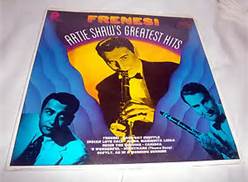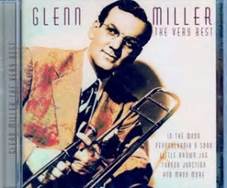
The Top 100 Instrumentals of the Forties will provide some interesting revelations regarding the top 100 songs. In this decade, there were only 225 instrumentals that made it to the charts. We will also share some historical musical firsts and other trivia to help you know what was going on in this decade.
The forties had the beginning of World War II and seeing the boys come home in 1945, which provided the “Baby Boomer” generation. This was the era of the “big bands” with many artists making hits on the charts. This era also had some great instrumentals which made the final top 100 chart.
You can check out the other three top 100 instrumental charts of the 1950’s, 1960’s & 1970’s.
In unrelated news, now there is a way to preserve your vinyl records and convert them to the CD format. Click here for more information.
Decade Music History & Facts
- On July 20, 1940, Billboard printed its first comprehensive Best Selling records chart which contained all labels.
- In November of 1941, Glenn Miller’s Chattanooga Choo Choo reaches #1, and will be honored with the first “gold record“, officially certifying it as a million-seller.
- In October of 1942, Bing Crosby’s recording of White Christmas soars to #1, and will become the biggest selling record in popular music history with over 100 million sold world-wide.
- In 1945, came the Billboard’s “Most Played by Disc Jockeys” survey.
- In 1946, RCA Victor issues its one billionth record John Philip Sousa’s “The Stars and Stripes Forever“.
- In December of 1946, marked the end of the fabled big band era with the breakup of eight of the countries most popular bands.
- In 1948, the 45 rpm records are issued for single releases and the 78s will be phased out by the late 50s.
- In 1949, Hank Williams emerges as the first modern country music superstar.

Charts Used To Rank the Songs
Below are listed all the charts and resources that were used to compile the ranking of the top 100 instrumentals of the forties.
- Juke Box Charts (15-30 Positions)
- Best Selling Records (15-30 Positions)
- Disc Jockey Charts (15-30 Positions)
- Resource: “Pop Memories 1890-1954” by Joel Whitburn
Top 100 of the Forties Trivia
Below is some important trivia facts regarding the instrumental songs from 1940-1949 that made it to the chart:
- There are a total of 13 songs to reach the #1 position.
- The top artist for the decade is Glenn Miller with 16 songs on the chart.
- The year of 1941 had the most songs on the chart with 25.
- The year of 1949 had the least number of songs on the chart with 2.
- The record of longevity on the chart is “Twelfth Street Rag” #4, by Pee Wee Hunt with 32 weeks.
- To make the top 100, the song had to peak in the top twenty at position #18 or higher.
- To make the top 40, the song had to peak at the #9 position or higher.
- To make the top 10, the song had to peak at the #1 position.
- There were a total of 33 different artists that charted a song on this chart.
- There were a total of 225 instrumental hits that made it to the charts from 1940-1949.
- The top 3 songs on the chart all came from the same year of 1940.

The Top 100 Instrumentals of the 40’s
Below is the list of the top 100 instrumentals for the decade of the forties. They are listed in rank order with the Title/Artist/Peak Position #/Number Weeks at Peak Position () /Year of Release.
Rank Title/Artist / Peak / Peak Weeks / Year
- Frenesi / Artie Shaw #1 (13) 1940
- In The Mood / Glenn Miller #1 (13) 1940
- Tuxedo Junction / Glenn Miller #1 (9) 1940
- Twelfth Street Rag / Pee Wee Hunt #1 (8) 1948
- Peg O’ My Heart / Harmonicats #1 (8) 1947
- Piano Concerto In B Flat / Freddy Martin #1 (8) 1941
- Sleepy Lagoon / Harry James #1 (4) 1942
- Jersey Bounce / Benny Goodman #1 (4) 1942
- Peg O’ My Heart / Three Suns #1 (4) 1947
- A String Of Pearls / Glenn Miller #1 (2) 1942
- I’ve Got My Love To Keep Me Warm / Les Brown #1 (1) 1948
- Intermezzo / Guy Lombardo #1 (1) 1941
- Song Of The Volga Boatmen / Glenn Miller #1 (1) 1941
- Velvet Moon / Harry James #2 (2) 1943
- Star Dust / Artie Shaw #2 (1) 1941
- Maria Elena / Wayne King #2 (1) 1941
- Anvil Chorus / Glenn Miller #3 (1) 1941
- Perfidia (Tonight) / Xavier Cugat #3 (1) 1941
- Pompton Turnpike / Charlie Barnet #3 (1) 1940
- Sabre Dance / Woody Herman #3 (1) 1948
- I Dreamt I Dwelt In Harlem / Glenn Miller #3 (1) 1941
- Cherry / Harry James #4 (1) 1944
- Heartaches / Harry James #4 (1) 1947
- Boogie Woogie / Tommy Dorsey #4 (1) 1945
- Boogie Woogie / Tommy Dorsey #5 (1) 1943
- You Made Me Love You / Harry James #5 (1) 1941
- Intermezzo / Wayne King #5 (1) 1941
- St. Louis Blues March / Tex Beneke #5 (1) 1948
- Pennsylvania 6-5000 / Glenn Miller #5 (1) 1940
- Strictly Instrumental / Harry James #5 (1) 1942
- My Melancholy Baby / Sam Donohue #5 (1) 1947
- Again / Tommy Dorsey #6 (1) 1949
- Bumble Boogie / Freddy Martin #7 (1) 1946
- Misirlou / Jan August #7 (1) 1946
- Don’t Get Around Much Anymore / Duke Ellington #8 (1) 1943
- One O’ Clock Boogie / Count Basie #8 (1) 1947
- No Name Jive / Glen Gray #9 (1) 1940
- Slow Freight / Glenn Miller #9 1940
- Falling Leaves / Glenn Miller #9 1940
- A Lover’s Lullaby / Glen Gray #9 (1) 1940
- Jersey Bounce / Jimmy Dorsey #9 (1) 1942
- Tippin’ In / Erskine Hawkins #9 (1) 1945
- Tonight (Perfidia) / Jimmy Dorsey #9 (1) 1941
- Dancing In The Dark / Artie Shaw #9 (1) 1941
- Music Makers / Harry James #9 (1) 1941
- The Mad Boogie / Count Basie #10 (1) 1946
- Summit Ridge Drive / Artie Shaw #10 (1) 1940
- Dolemite / Erskine Hawkins #10 (1) 1940
- Concerto For Clarinet / Artie Shaw #10 1941
- Intermezzo / Charlie Spivak #10 (1) 1941
- Do Nothin’ Till You Hear From Me / Duke Ellington #10 (1) 1944
- Cirbirbin / Harry James #10 (1) 1940
- It Had To Be You / Artie Shaw #10 (1) 1944
- Twelfth Street Rag / Frankie Carle #10 (1) 1948
- Lament To Love / Harry James #10 (1) 1941
- Intermezzo / Benny Goodman #10 (1) 1941
- A Dreamer’s Holiday / Ray Anthony #11 (1) 1949
- Take The “A” Train / Duke Ellington #11 (1) 1941
- Poinciana / Benny Carter #11 (1) 1944
- Easter Parade / Harry James #11 (1) 1942
- Sherwood’s Forest / Bobby Shewwood #11 (1) 1946
- Warsaw Concerto / Freddy Martin #11 (1) 1943
- What Is This Thing Called Love / Les Paul #11 (1) 1948
- Estrelita / Harry James #12 (1) 1944
- Huckelberry Duck / Raymond Scott #12 (1) 1940
- Opus No. 1 / Tommy Dorsey #12 (1) 1945
- One O’ Clock Jump / Count Basie #12 (1) 1947
- Mission To Moscow / Benny Goodman #12 (1) 1944
- You Walk By / Wayne King #12 (1) 1941
- Rhapsody In Blue / Glenn Miller #13 (1) 1943
- Adios / Glenn Miller #13 (1) 1941
- Prince Charming / Harry James #13 (1) 1943
- Artistry Jumps / Stan Kenton #13 (1) 1946
- Holiday For Strings / Jimmy Dorsey #13 (1) 1944
- Northwest Passage / Woody Herman #13 (1) 1945
- Twilight Time / Three Suns #14 (1) 1944
- Patience And Fortitude / Count Basie #14 (1) 1946
- Symphonie Moderne / Freddy Martin #14 (1) 1941
- Tuxedo Junction / Glenn Miller #15 (1) 1940
- A String Of Pearls / Benny Goodman #15 (1) 1942
- Five O’ Clock Whistle / Erskine Hawkins #15 (1) 1941
- American Patrol / Glenn Miller #15 (1) 1942
- Memphis Blues / Harry James #15 (1) 1944
- Let’s Go Home / Charlie Spivak #15 (1) 1941
- Jersey Bounce / Shep Fields #15 (1) 1942
- Frenesi / Glenn Miller #16 (1) 1941
- The Sky Fell Down / Glenn Miller #16 (1) 1940
- Autumn Serenade / Harry James #16 (1) 1945
- Mandy, Make Up Your Mind / Tommy Dorsey #16 (1) 1943
- Begin The Beguine / Eddie Heywood #16 (1) 1948
- Johnson Rag / Larry Clinton #16 (1) 1940
- Twilight Time / Les Brown #16 (1) 1945
- Artistry In Rhythm / Stan Kenton #16 (1) 1944
- Long Ago (And Far Away) / Three Suns #16 (1) 1944
- Apple Honey / Woody Herman #16 (1) 1945
- Nona / Erskine Hawkins #17 (1) 1941
- Danny Boy / Glenn Miller #17 (1) 1940
- Jalousie / Harry James #17 (1) 1947
- Redskin Rhumba / Charlie Barnet #18 (1) 1940
- Alice Blue Gown / Glenn Miller #18 (1) 1940
Go back to the top 100 songs of all time home page.
